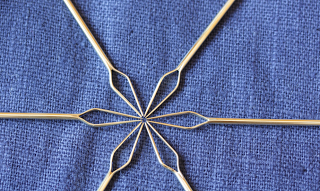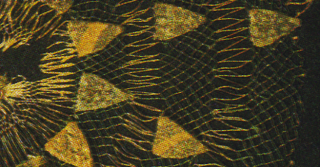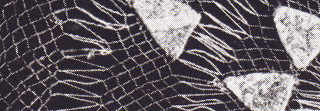A while ago, I marked out two weekends for giving workshops... and then it took me a while to decide on what topics to offer. In the end, I had decided on making one of the weekends a two-day tablet-weaving workshop. And that's where it got complicated.
For table-weaving, you need to tension your warp. Obvious, right? Well, for several people to have a nice setup where they can work with a nicely tensioned warp in appropriate length at an appropriate height, this very quickly means you need a system for the setup. Especially as every warp should be accessible without crawling on the floor to pass under other people's warps, or hopping over them (which would be an admirable feat, by the way). After all, the weavers might want to get up and stretch once in a while, or have something to drink, or go to the toilet, or whatever.
(Fun fact: I might actually do a bit of crawling underneath things in such a workshop, even though it would not be necessary - but it would mean a longer way to walk. So.)
In consequence, this means I need a room that is large enough to accommodate my setup of several tables and chairs, which will then accommodate up to a dozen weavers. And finding a room that is close enough to my home base, affordable, and available on the weekend in question - well, that has turned out to be a challenge greater than expected.
But finally, I have found a room for the tablet-weaving course. So there will be a weaving weekend in Erlangen on August 31 and September 1, teaching a deep understanding of tablet-weaving and a system that will allow you to freestyle patterns. No pattern draft necessary. (If you're interested, there is an Early Bird discount of 25 € with the code DerFrueheVogel - valid until May 31.)
With that course and weekend all settled, the two others were easier: I will be offering a filet netting workshop on June 22, and a "freestyle workshop" on June 23. The freestyle workshop is 3 to 4 people, we will chat beforehand on what you are interested in, and then everyone gets to work on their own project or issues - and can sneak peeks into the other participants' projects as well.
So if you're interested... check out the workshop links, and maybe I'll see you in a month or three!







